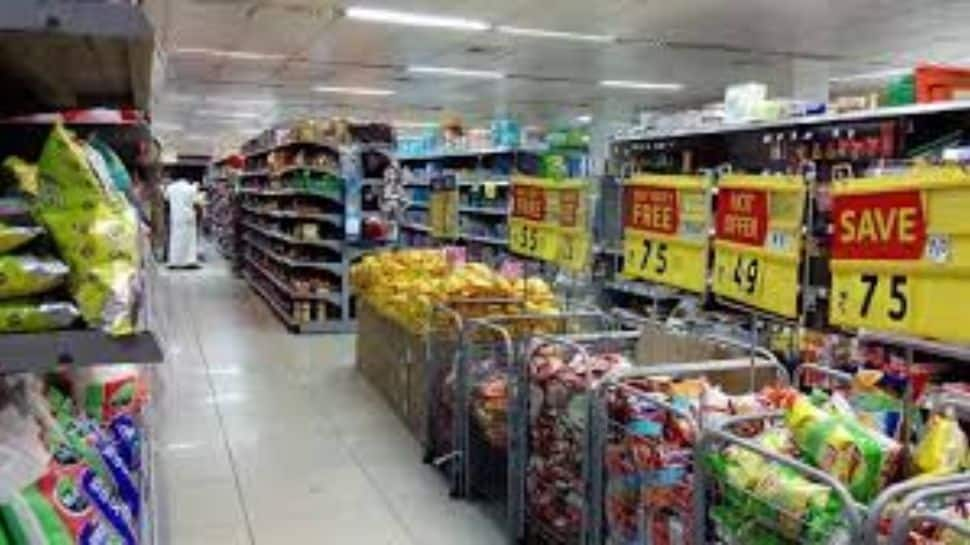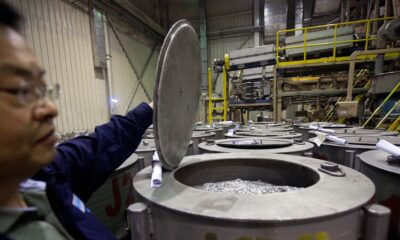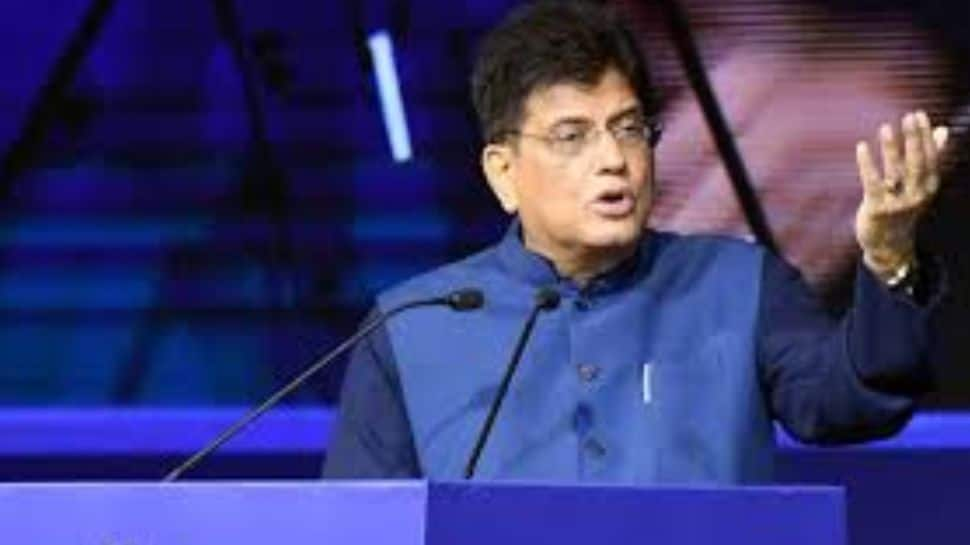Business
Trump’s 50% tariffs on India take effect: Industry analysts warn of fallout as export hubs brace for pain; trade deal still in limbo— key takeaways – Times of India

NEW DELHI: The additional 25 per cent tariff imposed by US President Donald Trump on Indian goods over New Delhi’s purchases of Russian oil have come into effect, raising the overall levy on exports to 50 per cent.Trump had first announced reciprocal tariffs of 25 per cent on India from August 7, alongside similar levies on about 70 other countries. He later doubled tariffs on Indian goods to 50 per cent, citing Russian crude imports, but allowed a 21-day window for negotiations.
Who’ll pay the price?
Several sectors, including textiles and apparels, gems and jewellery, seafood (primarily shrimp), and leather goods, are set to be affected by the newly imposed tariffs. The Indian pharmaceutical industry, a crucial supplier of generic drugs to the US, along with electronics and smartphones, including Apple iPhones, have been exempted from the tariffs. While some of the tariff costs may be absorbed by Indian exporters through price reductions and US importers by incurring higher expenses, the tariffs are expected to render Indian exports less competitive compared to exporters from neighbouring countries that face tariffs in the 10–25 percent range. The resulting decline in orders from the US, India’s largest market for these products, is anticipated to adversely impact hundreds of MSMEs (micro, small and medium enterprises), leading to layoffs and increased unemployment.
Exemptions and transit Clause
Indian products already “loaded on a ship and in transit” to the US before the August 27 deadline will be exempt from the additional 25 per cent duty, provided they are cleared for consumption by September 17, 2025, and importers declare the special code HTSUS 9903.01.85 to US Customs, DHS said.
FIEO sounds alarm as US tariffs bite
Apex exporters body Federation of Indian Export Organisations (FIEO) on Tuesday had warned that steep US tariffs have forced textile and apparel manufacturers in Tirupur, Noida, and Surat to halt production, reported PTI.President S C Ralhan said about $47–48 billion worth of India’s exports to the US now face 30–35 per cent cost disadvantages, making them uncompetitive against rivals from Vietnam, Bangladesh and China. Labour-intensive sectors like leather, shrimp and handicrafts are also at risk.He urged immediate support through cheaper credit, loan moratoriums, and faster trade deals, while stressing urgent diplomatic engagement with Washington.Also read: Indian refiners unlikely to stop Russia crude oil trade under US pressure
India stays firm
The government has ruled out retaliation but is preparing measures to cushion exporters from the 50% US tariffs. Senior officials told ET that a Rs 25,000-crore Export Promotion Mission is under consideration, covering trade finance, SEZ reforms, warehousing, ecommerce hubs, and “Brand India” promotion. Commerce minister Piyush Goyal said India will protect domestic interests through GST tweaks to boost demand in sectors like textiles and food processing, while also diversifying trade ties with other economies.Earlier, on Monday, Prime Minister Narendra Modi had said he could not compromise on the interests of farmers, cattle-rearers, and small-scale industries. “Pressure on us may increase, but we will bear it,” he asserted. India had described the US move as “unjustified and unreasonable.”
Experts call it a ‘lose-lose’
Trade experts warned the escalation risks damaging both economies. Mark Linscott, Senior Advisor with The Asia Group, was quoted by that “unfortunately”, the US and India have managed to convert what appeared to be a true and unprecedented win-win on trade into a “remarkable lose-lose.”“Hopefully, we will find a way to conclude a satisfactory mutually beneficial Free Trade Agreement with the United States early rather than late and that would certainly take us to the next step of the visit of President Trump to India,” said former foreign secretary and Rajya Sabha MP Harsh Vardhan Shringla.Meanwhile, Raj Manek, Executive Director and Board Member of Messe Frankfurt Asia Holdings Ltd stated India must intensify its focus on innovation and sustainability to achieve its $100 billion target in textiles. He stressed that investment in man-made fibres (MMF) and performance fabrics would be critical at this stage. “Over 60 per cent of global fibre consumption is now in MMF. With the PLI scheme targeting MMF apparel and technical textiles, India is well-positioned to build scale and future-ready capacity,” Manek said after the conclusion of the 13th edition of Gartex Texprocess India, a tradeshow on garment and textile machinery held in the capital, as reported by ET. He added, “At the same time, adopting energy-efficient machinery, managing effluents effectively, and converting waste into value will help meet ESG expectations while lowering costs.”
Indian refiners unlikely to stop Russia crude oil trade
Indian refineries are continuing their imports of Russian crude despite the Trump administration’s 25 per cent additional tariffs, with officials indicating minimal likelihood of halting purchases. Executives told ET that September-loading cargoes were slightly lower due to reduced discounts on Russian oil, but October volumes could rise as prices adjust. They stressed that there are no official instructions to stop procurement, reflecting the government’s clear message of “country first, commerce later.” Officials, including PM Narendra Modi, External Affairs Minister S Jaishankar, and Commerce Minister Piyush Goyal, have conveyed that India will support exporters through challenges rather than yield to US pressure. Industry representatives also noted that while transitioning from Russian oil is technically feasible, rapid changes are unnecessary as supply lines and global markets remain stable.Also read: India prepares multi-pronged strategy to shield economy; details here
Blow to the US too?
The tariff shock is also expected to hit the American economy. According to a report by the State Bank of India (SBI), US GDP could be shaved by 40–50 basis points, while inflationary pressures are likely to rise due to higher input costs and a weaker dollar.Also read: 50% tariffs on India to blowback on Trump? US GDP could shrink 40–50 bps, inflation to flare “We believe that US tariffs are likely to affect US GDP by 40–50 bps along with higher input cost inflation,” the SBI report noted. Import-sensitive sectors such as electronics, automobiles, and consumer durables are already feeling the strain. The report added that US inflation is expected to remain above the Federal Reserve’s 2 per cent target through 2026, driven by tariff pass-through and currency effects.
Trade deal still in limbo
Talks on a bilateral trade agreement (BTA) between India and the US have stalled, with the American delegation having postponed its scheduled August 25 visit to New Delhi.US Treasury Secretary Scott Bessent has accused India of “profiteering” by reselling Russian oil, while trade talks between the two sides remain on “thin ice,” according to experts. Analysts warn that unless Prime Minister Modi and President Trump engage directly, chances of reviving the deal remain slim. The deadlock raises uncertainty for exporters, who had earlier hoped for tariff relief through a limited trade pact.
Business
OGRA Announces LPG Price Increase for December – SUCH TV

The Oil and Gas Regulatory Authority (OGRA) has approved a fresh increase in the price of liquefied petroleum gas (LPG), raising the cost for both domestic consumers and commercial users.
According to the notification issued, the LPG price has been increased by Rs7.39 per kilogram, setting the new rate at Rs209 per kg for December. As a result, the price of a domestic LPG cylinder has risen by Rs87.21, bringing the new price to Rs2,466.10.
In November, the price of LPG stood at Rs201 per kg, while the domestic cylinder was priced at Rs2,378.89.
The latest price hike is expected to put additional pressure on households already grappling with rising living costs nationwide.
Business
Taxable Value Of Goods Surges 15% In Sep-Oct As GST Cuts Boost Consumption

New Delhi: The taxable value of all supplies under GST surged by a robust 15 per cent during September-October this year, compared to the same period in 2024 due to sharp increase in consumption triggered by the tax rate cuts on goods across sectors that kicked in from September 22, according to official sources.
The growth in the same two-month period last year was 8.6 per cent. “This surge in taxable value during ‘Bachat Utsav’ demonstrates strong consumption uplift, stimulated by reduced rates and improved compliance behaviour,” a senior official said.
He pointed out that the growth has especially been strong in sectors where rate rationalisation was implemented, such as FMCG, pharma goods, food products, automobiles, medical devices and textiles. In these sectors, the taxable value of supplies has seen significantly higher growth, confirming that lower GST rates translated directly into higher consumer spending.
“It vindicates our strategy that reducing rates on essentials and mass-use sectors would create demand-side buoyancy — a Laffer Curve–type demand uplift,” he explained.These trends confirm that GST next-gen reforms have not disrupted revenue stability, and that consumption-side buoyancy has begun to translate into higher taxable value in key sectors.
This growth is in value terms which means that since GST rates were lower, the growth in volume terms will be even higher. It is clearly visible that while the Next Gen Reforms resulted in significant Bachat — increased consumption, industry has been very proactive in passing on the GST savings to the final consumers and ensuring that there is no supply side deficiency.
As GDP private consumption data will be released much later, GST taxable value serves as the most reliable real-time proxy for consumption, and the current numbers clearly indicate sustained demand expansion, the official added.
Business
Private sector data: Over 2 lakh private companies closed in 5 years; govt flags monitoring for suspicious cases – The Times of India

NEW DELHI: The government on Monday said that over the past five years, more than two lakh private companies have been closed in India.According to data provided by Minister of State for Corporate Affairs Harsh Malhotra in a written reply to the Lok Sabha, a total of 2,04,268 private companies were shut down between 2020-21 and 2024-25 due to amalgamation, conversion, dissolution or being struck off from official records under the Companies Act, 2013.Regarding the rehabilitation of employees from these closed companies, the minister said there is currently no proposal before the government, as reported by PTI. In the same period, 1,85,350 companies were officially removed from government records, including 8,648 entities struck off till July 16 this fiscal year. Companies can be removed from records if they are inactive for long periods or voluntarily after fulfilling regulatory requirements.On queries about shell companies and their potential use in money laundering, Malhotra highlighted that the term “shell company” is not defined under the Companies Act, 2013. However, he added that whenever suspicious instances are reported, they are shared with other government agencies such as the Enforcement Directorate and the Income Tax Department for monitoring.A major push to remove inactive companies took place in 2022-23, when 82,125 companies were struck off during a strike-off drive by the corporate affairs ministry.The minister also highlighted the government’s broader policy to simplify and rationalize the tax system. “It is the stated policy of the government to gradually phase out exemptions and deductions while rationalising tax rates to create a simple, transparent, and equitable tax regime,” he said. He added that several reforms have been undertaken to promote investment and ease of doing business, including substantial reductions in corporate tax rates for existing and new domestic companies.
-

 Sports1 week ago
Sports1 week agoWATCH: Ronaldo scores spectacular bicycle kick
-

 Entertainment1 week ago
Entertainment1 week agoWelcome to Derry’ episode 5 delivers shocking twist
-

 Politics1 week ago
Politics1 week agoWashington and Kyiv Stress Any Peace Deal Must Fully Respect Ukraine’s Sovereignty
-

 Business1 week ago
Business1 week agoKey economic data and trends that will shape Rachel Reeves’ Budget
-

 Politics1 week ago
Politics1 week ago53,000 Sikhs vote in Ottawa Khalistan Referendum amid Carney-Modi trade talks scrutiny
-

 Tech6 days ago
Tech6 days agoWake Up—the Best Black Friday Mattress Sales Are Here
-

 Fashion1 week ago
Fashion1 week agoCanada’s Lululemon unveils team Canada kit for Milano Cortina 2026
-

 Tech1 day ago
Tech1 day agoGet Your Steps In From Your Home Office With This Walking Pad—On Sale This Week













